VC funds go through challenging times world-wide but the situation in Canada is probably worse…
Entrepreneurship
When Jelly launched a week ago, it was amazing to see how quickly the app got traction – over 100K questions were asked during the first week. Certainly, Jelly’s high profile team (co-founder Biz Stone, and individual investors like Jack Dorsey, Bono, and Al Gore) helped spark widespread speculation and buzz leading up to the […]
VC funds go through challenging times world-wide but the situation in Canada is probably worse…
There is not doubt that Bitcoin / the blockchain is a revolutionary technology. Once implemented,…
When Jelly launched a week ago, it was amazing to see how quickly the app got traction – over 100K questions were asked during the first week.
Certainly, Jelly’s high profile team (co-founder Biz Stone, and individual investors like Jack Dorsey, Bono, and Al Gore) helped spark widespread speculation and buzz leading up to the launch. In addition, Jelly leverages users’ existing social graphs on Twitter and Facebook, so it immediately overcame the cold-start problem most platforms and marketplaces face when trying to build a user base at the beginning.
However, digging deeper into the quality of engagement during Jelly’s first week reveals some potential problems with this rapid ramp-up. Only 25% of questions posed ever received an answer. The daily active user count has been trending downward as the media buzz surrounding the initial launch tapers off. And, the number of people asking questions has outpaced the number of people answering them – pointing to a potentially unbalanced marketplace. You can find more data about Jelly’s first week from RJMetrics.

When an app’s user base ramps up so quickly, there’s no time for a community to form or for the product to mature. Immediate primetime is often a real risk for both. Jelly’s users are still trying to figure out how to make use of the service beyond identifying spiders or asking “What does the fox say.” And the very public nature of this launch may turn off casual users before its power users have a chance to hash out the most meaningful use cases.
At a time when growth hacking is top of mind for everybody, the Jelly experience reminds me of the value of growing slowly during the early stages of a product. A closed beta and/or delaying the push into existing social graphs might be two strategies to go back to.
Portfolio
It’s been an eventful quarter (when has it not?), and somehow we’ve already crossed the halfway mark of 2025. We wanted to take a moment to highlight just a few of the wins, milestones, and momentum we’ve seen this past quarter. As always, there’s a whole lot happening behind the scenes that can’t be shared […]
The V1 family kicked off the new year with fresh energy and no shortage of…
At the end of Q1, we anticipated that a tech sector slowdown is ideal for…